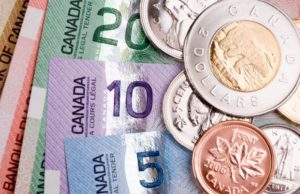Below is a notice from the district which I was asked to pass on to families.
Sincerely,
Ms. Chin
Division 4
Below is a notice from the district which I was asked to pass on to families.
Sincerely,
Ms. Chin
Dear Division 4 Families,
I hope you have all been doing well! I just wanted to write a quick post to let you know that I signed up for an account for a website that provides access to levelled books. Each child has an account under my teacher account. Use of this website is entirely optional; it just provides more access to levelled books where your child can read independently or listen to a book being read and follow along.
Take care,
Ms. Chin
Before the break, we were working on financial literacy and measurement. Please review the concepts with your child.
Financial Literacy: we worked on this concept with our reward system using paper money. We discussed the coins themselves, as well as concepts such as saving vs. spe nding. Please help your child to review the names of the coins (penny, nickel, dime, quarter, loonie, toonie), corresponding values, as well as identifying features (i.e. a dime has a boat on it/aka “schooner”, the $5 dollar bill is blue etc.). To review, try playing the “money game” with your child or see if they are interested in playing it with other kids during “virtual playdates” or with siblings. It’s a simple game where I would give the kids funny scenarios or storylines and they would have to choose what coins/bills to use to pay for the imaginary items. Below is the document for coins that they can use to play the game. I also found one for bills, however an option is that your child could cut out some rectangles and write various denominations on them ($5, $10, $20, $50, $100) and colour them in the corresponding colours for the bills.
nding. Please help your child to review the names of the coins (penny, nickel, dime, quarter, loonie, toonie), corresponding values, as well as identifying features (i.e. a dime has a boat on it/aka “schooner”, the $5 dollar bill is blue etc.). To review, try playing the “money game” with your child or see if they are interested in playing it with other kids during “virtual playdates” or with siblings. It’s a simple game where I would give the kids funny scenarios or storylines and they would have to choose what coins/bills to use to pay for the imaginary items. Below is the document for coins that they can use to play the game. I also found one for bills, however an option is that your child could cut out some rectangles and write various denominations on them ($5, $10, $20, $50, $100) and colour them in the corresponding colours for the bills.
Extension Option: ask them to tell you verbally what coins/bills to use without having the visuals in front of them. You can also ask them to pay you using different coins or bills (i.e. they paid $1 with a loonie, ask them how else they could “make” $1 using the other coins). *If possible, try to get them to practice using real coins/bills.
Paper Money: Canadian Coins
Word Problems for Grade 2’s (or extension option for Grade 1’s): Below is a document with word problems called “Can I buy it?”, students read the word problems and determine if they have enough money to buy certain objects presented in the scenario. Please ask your child to write down their answers on a piece of paper. I have included the answer key so that your child can check their answers. Note: Please tell your child to record their answer for each “set”. There is the “snacks set” (purple edge on cards) and the “toys set” (green edge on cards)
Can I Buy It Word Problems: Can I Buy It? Money-Word Problems
Answer Key: Answer Key-Can I Buy It? Money-Word Problems
Measurement: To review the concepts of measurement, your child can practice measuring things around the home. You can also use non-standard units of measurement (i.e. a piece of paper is two hands long, this window is 7 markers long, etc.). In the classroom, we played the “measurement game” where I would ask them to find objects that were a certain measurement (i.e. “find an object that is 10 cm”) as quick as they could. We practiced using mm, cm, and talked about metres. If you would like your child to complete this activity independently, I have listed some measurements for objects they can find in their home. Here is a printable ruler if they need one: Printable Ruler
Measurement Game: Find me an object that is…..
Find me an object that is…..
Extension option: introduce the concept of inches, feet and yards and have them experiment with these measurements. I did a simple introduction in class and just told them to round to the nearest inch rather than going into detail about fractions of an inch. Note: inches, feet and yards are not part of the Canadian curriculum, however some students were asking about these measurements and I just introduced them.
© 2024 Ms. Chin
Theme by Anders Noren — Up ↑